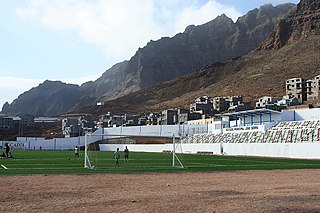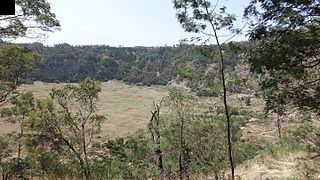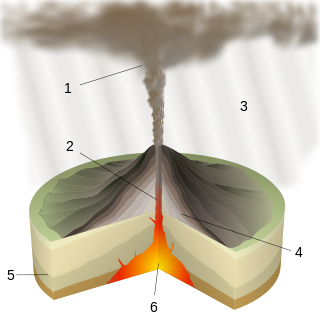
Mindelo is a port city in the northern part of the island of São Vicente in Cape Verde. Mindelo is also the seat of the parish of Nossa Senhora da Luz, and the municipality of São Vicente. The city is home to 93% of the entire island's population. Mindelo is known for its colourful and animated carnival celebrations, with roots in Portuguese traditions.
Ribeira, Portuguese and Galician for stream or riverside, may refer to the following places:

Ribeira Grande is a municipality in the northern part of the island of São Miguel in the Portuguese Azores. The population in 2011 was 32,112, in an area of 180.15 km². The municipal seat is located in the civil parish of Matriz, with a population of about 4000 inhabitants, part of the urbanized core of what is commonly referred to as the city of Ribeira Grande.

Ribeira Grande is a concelho (municipality) of Cape Verde. Situated in the northern part of the island of Santo Antão, it covers one fifth of the island area, and is home to nearly half of its population. Its seat is the city Ponta do Sol.

Paul is a concelho (municipality) of Cape Verde. Situated in the northeastern part of the island of Santo Antão, it covers 7% of the island area, and is home to 16% of its population. Its seat is the town Pombas.
The Santo Antão Island League (South) is a regional championship played in Porto Novo, Santo Antão Island, Cape Verde. The winner of the championship plays in Cape Verdean football Championships of each season. The championship is organized by the Santo Antão South Regional Football Association. It has one of the fewest teams in the Capeverdean football or soccer ahead of Brava's and São Nicolau's. Its current head is Fernando Lima since late 2016.

Pombas is a city in the northeastern part of the island of Santo Antão, Cape Verde. It is the seat of the municipality Paul. It is situated on the coast, at the mouth of the Ribeira do Paul, 7 km (4.3 mi) southeast of Ribeira Grande and 15 km (9.3 mi) north of the island capital Porto Novo. The national roads EN1-SA02 and EN1-SA03 connect Pombas with Ribeira Grande and Porto Novo, respectively. Pombas was elevated from town to city in 2010.

Ribeira Grande is the largest town of the Ribeira Grande Municipality on the island of Santo Antão, Cape Verde. It has become a city in 2010. In 2010 its population was 2,564. It is situated in the northeastern part of the island, near the outflow of the river Ribeira Grande and its tributary Ribeira da Torre into the Atlantic Ocean. Neighborhoods include Tarrafal, Rua de Agua, Rua d'Horta and Penha de França.

Porto Novo is a city in the island of Santo Antão, in Cape Verde. It is the seat of the Porto Novo municipality. At the 2010 census, the town had 9,310 inhabitants, which makes it the most populous settlement of the island.

Grogue, also known as grogu or grogo, is a Cape Verdean alcoholic beverage, an aguardente made from sugarcane. Its production is fundamentally artisanal, and nearly all the sugarcane is used in the production of grogue. The cane is processed in a press known as a trapiche.
The 2003 Cape Verdean Football Championship season was the 24th of the competition of the first-tier football in Cape Verde. Its started on 17 May and finished on 2 August. The tournament was organized by the Cape Verdean Football Federation. No club participated in the 2004 CAF Champions League or the 2004 CAF Winner's Cup.

The island of Santo Antão in Cape Verde in the west of the Barlavento Islands is home to several teams and clubs. The major amateur clubs are Sporting Clube do Porto Novo, Académica Porto Novo and Paulense. Its first football championship was founded in 1996 and from 2002, the association and competition are currently divided into two zones, the north and the south and includes all sports including football, basketball, volleyball and athletics and may have futsal today. Other than football, it has a single regional association covering the island.

Colá is a musical genre of Cape Verdean music

Lombo de Figueira is a settlement in the eastcentral part of the island of Santo Antão, Cape Verde, part of the municipality of Porto Novo and the parish of São João Baptista. In 2010 its population was 281. It is situated about 9 km north of the island capital Porto Novo, on the national road from Porto Novo to Ribeira Grande (EN1-SA01). Subdivisions include Água das Caldeiras and Chã de Tampa. An endemic species of butterflies, Leptotes pirithous capverti, has been found in the area.
The 2009 Cape Verdean Cup season was the 3rd competition of the regional football cup in Cape Verde. The season started on 20 July and finished with the cup final on 2 August. The cup competition was organized by the Cape Verdean Football Federation. Group A matches took place at Estádio Adérito Sena in Mindelo, São Vicente and Group B matches took place at Estádio Marcelo Leitão in Espargos. The final stage containing two semifinal matches and a final were played at Estádio da Várzea. Boavista Praia won their first of two cup title.
The 2018 Taça Nacional de Cabo Verde is the 6th edition of the Taça Nacional de Cabo Verde, the knockout football competition of Cape Verde. The competition, which is played out in a tournament between the cup winners of the nine islands, returns for the first time since 2012.




















